
This Never Before Seen Photo Captures Grief of 9/11
As the twin towers fell, photographer Robert Clark captured an unforgettable portrait of neighbors watching and comforting one another.
Amid all the iconic photos of September 11, it’s easy to forget those on the periphery of the event—the people who came together in shock and sadness to watch and process what they were seeing. Photographer Robert Clark took some of the most widely published photos that day, including a series of four images he shot from his rooftop in Brooklyn that show the slow-motion collision of the second plane hitting the towers.
Now, on the 15th anniversary of the attack, Clark has shared with National Geographic a never before seen image from 9/11, one that shows the tender side of a day of horror as his neighbors gathered to watch the smoke rise, drawn together by a collective sense of confusion, unsure of what to do or where to go.
"The building was full of artists and hipsters and painters and sculptors, the kind of people who don’t get up early in the morning," says Clark, who lived in Williamsburg at the time. "The roof started to fill up as we watched the towers collapse one at a time. Everyone just stared. The couple on the right was sitting there. The girl was lying down crying, and the guy was comforting her. At that moment, he leaned down and kissed her."










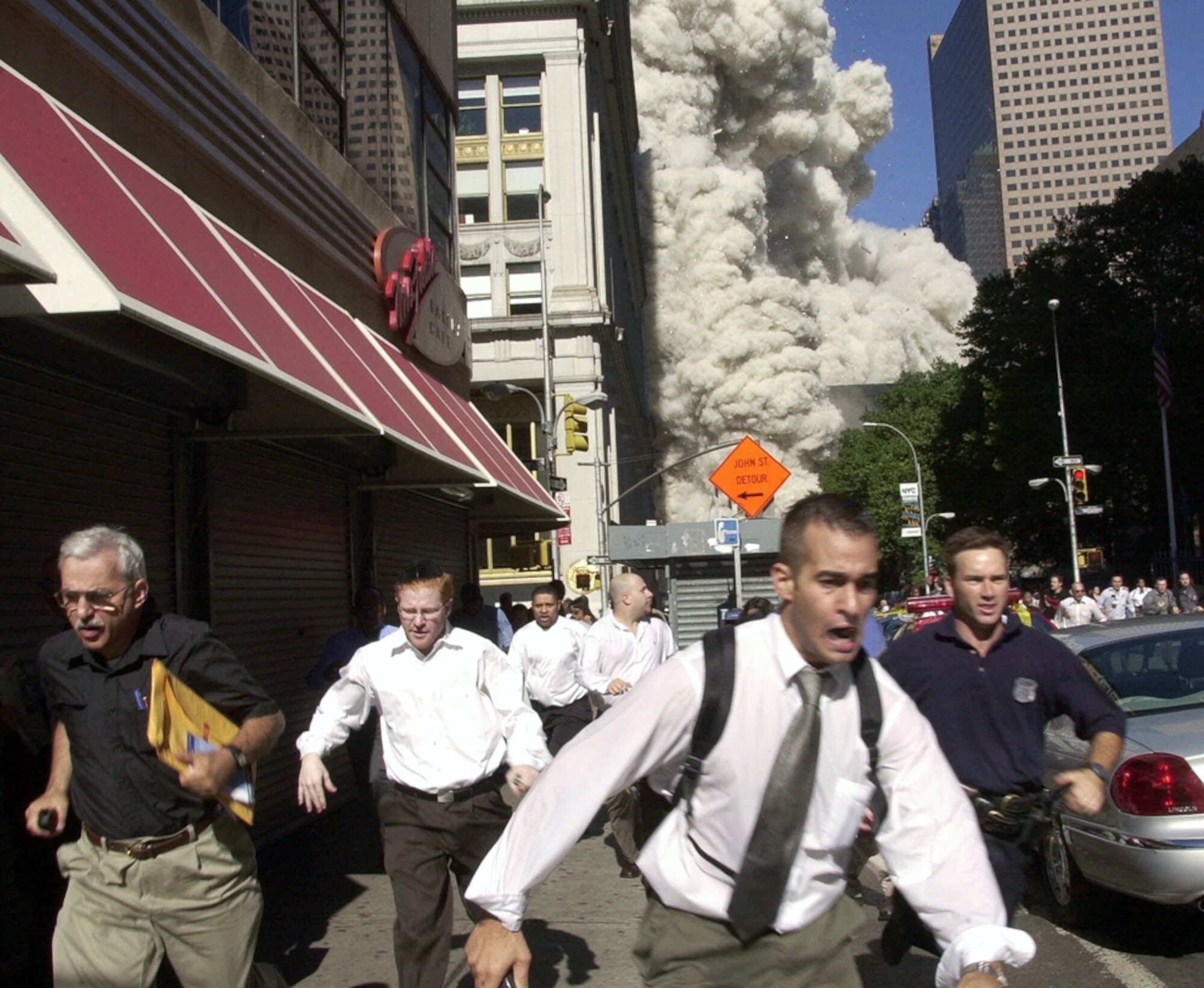







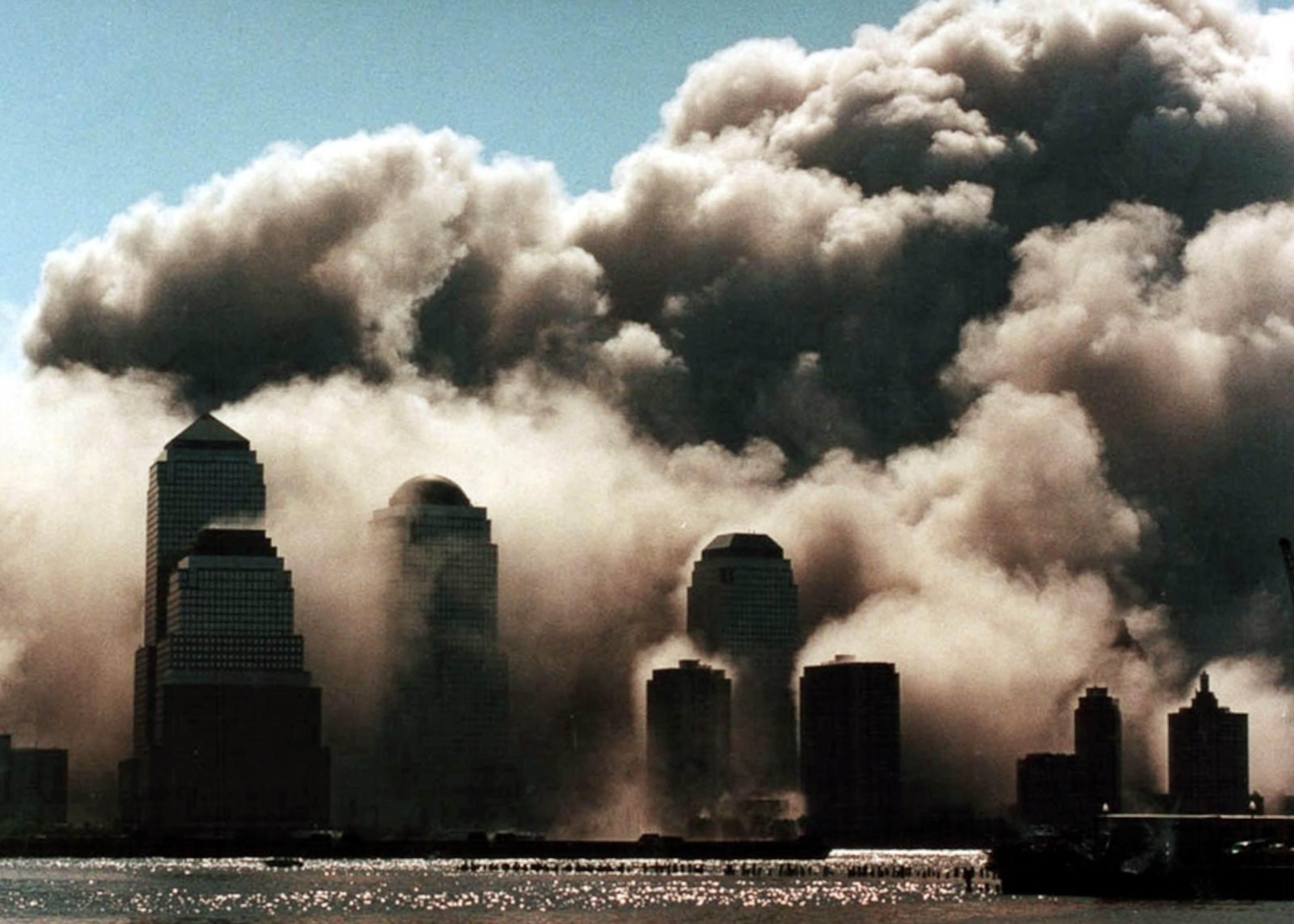
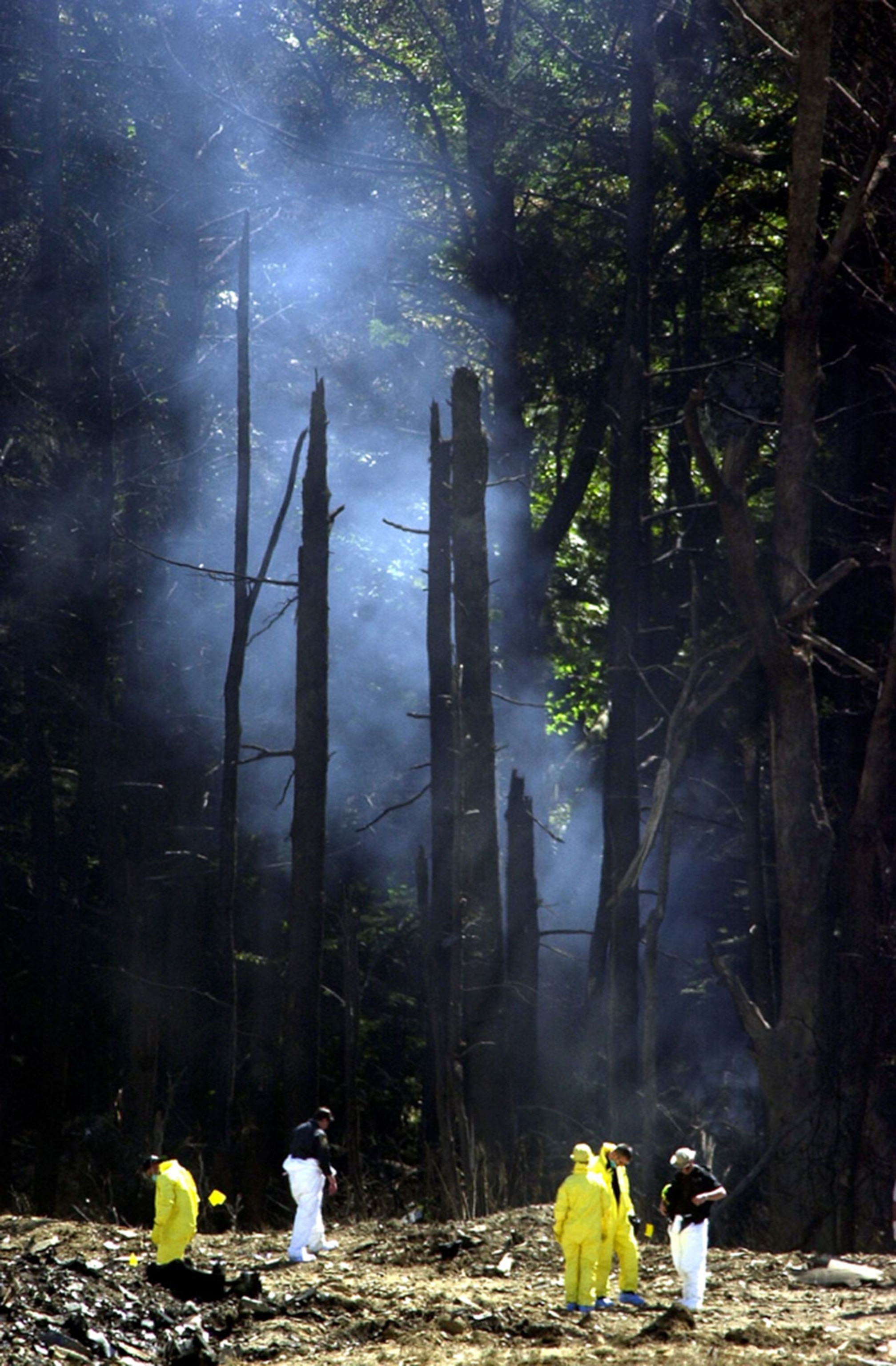

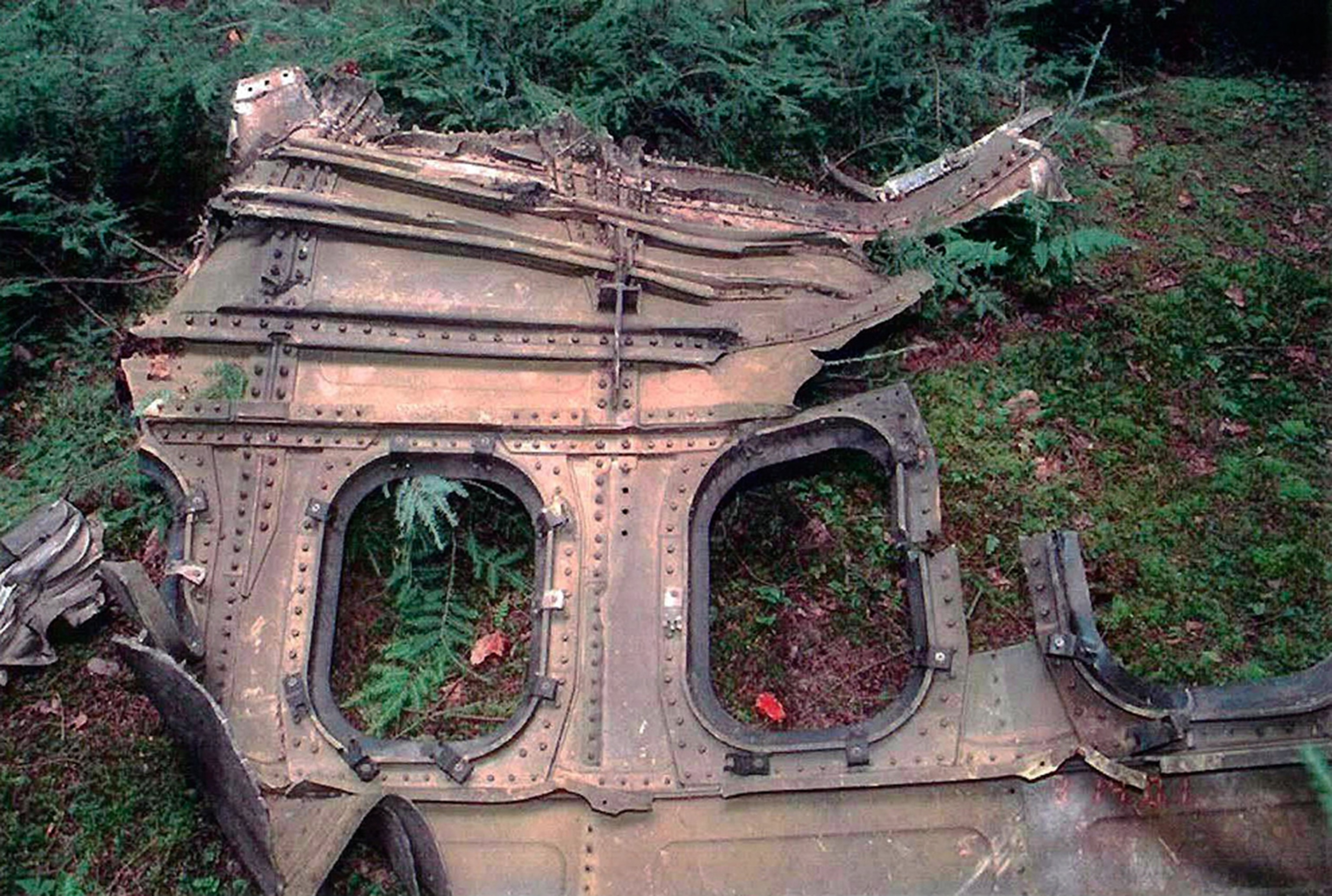



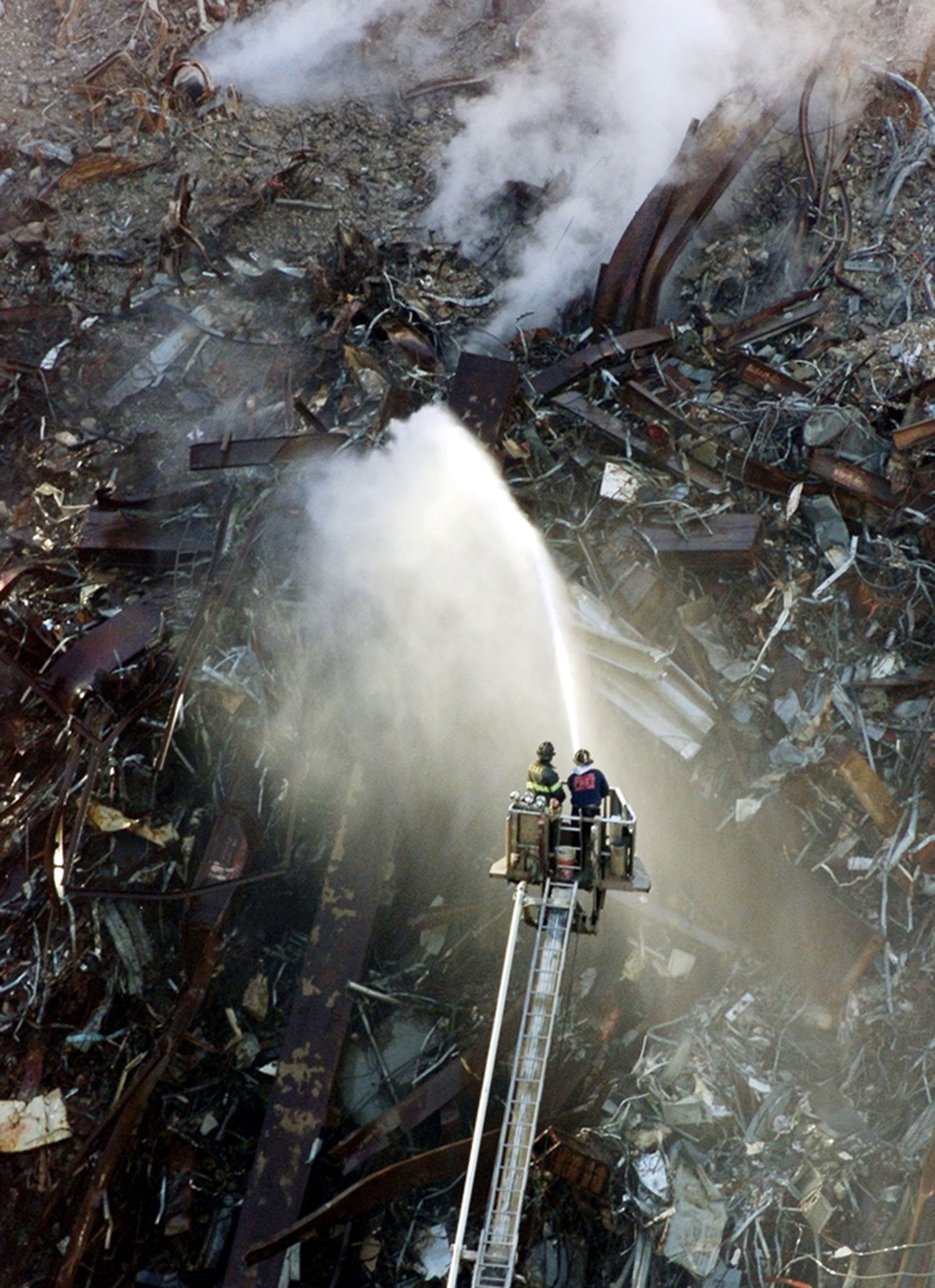

The image evokes another taken the same day, perhaps at the same time, by photographer Thomas Hoepker, who observed a group of five people on the Brooklyn waterfront as smoke rose from the fallen towers. He captured a moment when they seemed to look unmoved, even, judging from one woman’s pseudosmile, to be enjoying themselves (they weren’t, two people in the image later confirmed, and they didn’t appreciate the suggestion). Clark’s photo additionally might also be mistaken for a moment of lighthearted intimacy, a blithe kiss shared on a midmorning rooftop, had Clark himself not witnessed everyone on the roof squirm in shock and discomfort—the kiss was meant not to delight but to calm.
The identity of these people is, for now, lost in the fog of trauma. The intensity of the day didn’t lend itself to the usual formalities of photography like jotting down names. Clark shot 30 rolls of film before sunset, a stash he had on hand for a National Geographic assignment to Thailand on September 12 (it was postponed). He rushed his starker images, the ones showing the blunt terrorist attack in process, to Time magazine, and then, in the shuffle of checking on friends, family, and neighbors, the other photos sat. Clark had complicated feelings about when to look at them and what to do with them.
Time has a way of giving old photos new meaning, much like pulling back a lens reveals more of the original image. Clark was in a bar recently and saw on the wall a picture of the Hindenburg—a disaster no longer raw and with the added context of time. Fifteen years, he said, felt like the right time. "The further we get from the event, the more we can really see it," Clark says. "Pictures change as time passes, and people’s connections to them change too."
Related Topics
You May Also Like
Go Further
Animals
- The world's largest fish are vanishing without a traceThe world's largest fish are vanishing without a trace
- We finally know how cockroaches conquered the worldWe finally know how cockroaches conquered the world
- Why America's 4,000 native bees need their day in the sunWhy America's 4,000 native bees need their day in the sun
- Crowdsourcing an anti-poaching movement in South Africa
- Paid Content
Crowdsourcing an anti-poaching movement in South Africa - Fireflies are nature’s light show at this West Virginia state parkFireflies are nature’s light show at this West Virginia state park
Environment
- 2024 hurricane season forecasted to be record-breaking year2024 hurricane season forecasted to be record-breaking year
- Connecting a new generation with South Africa’s iconic species
- Paid Content
Connecting a new generation with South Africa’s iconic species - These images will help you see coral reefs in a whole new wayThese images will help you see coral reefs in a whole new way
- What rising temps in the Gulf of Maine mean for wildlifeWhat rising temps in the Gulf of Maine mean for wildlife
- He’s called ‘omacha,’ a dolphin that transforms into a man. Why?He’s called ‘omacha,’ a dolphin that transforms into a man. Why?
History & Culture
- Why this Bronze Age village became known as ‘Britain’s Pompeii’Why this Bronze Age village became known as ‘Britain’s Pompeii’
- These modern soldiers put Bronze Age armor to the testThese modern soldiers put Bronze Age armor to the test
- Should couples normalize sleeping in separate beds?Should couples normalize sleeping in separate beds?
- They were rock stars of paleontology—and their feud was legendaryThey were rock stars of paleontology—and their feud was legendary
Science
- Why the world's oldest sport is still one of the best exercisesWhy the world's oldest sport is still one of the best exercises
- What if aliens exist—but they're just hiding from us?What if aliens exist—but they're just hiding from us?
- Can a spoonful of honey keep seasonal allergies at bay?Can a spoonful of honey keep seasonal allergies at bay?
Travel
- Visit Rotterdam as it transforms itself into a floating cityVisit Rotterdam as it transforms itself into a floating city
- How to get off the beaten track in Northern LanzaroteHow to get off the beaten track in Northern Lanzarote




